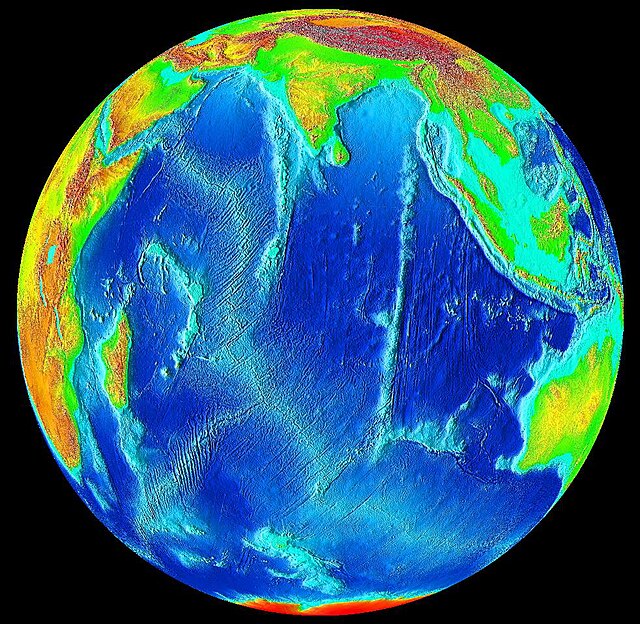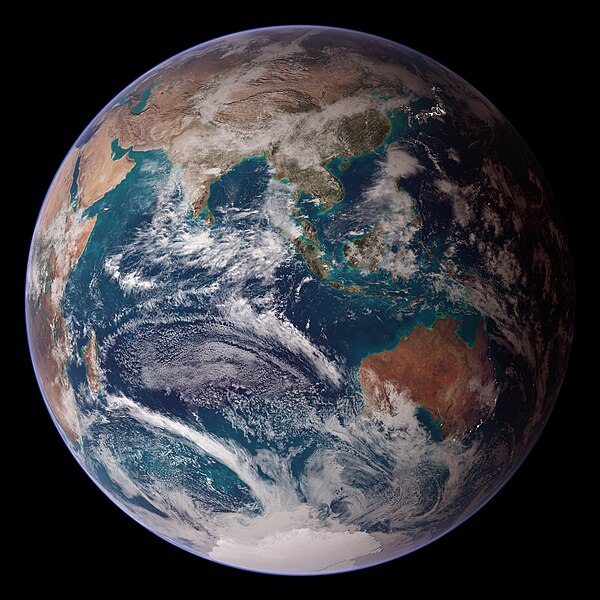The Indian Ocean brown cloud or Asian brown cloud is a layer of air pollution that recurrently covers parts of South Asia, namely the northern Indian Ocean, India, and Pakistan. Viewed from satellite photos, the cloud appears as a giant brown stain hanging in the air over much of the Indian subcontinent and the Indian Ocean every year between October and February, possibly also during earlier and later months. The term was coined in reports from the UNEP Indian Ocean Experiment (INDOEX). It was found to originate mostly due to farmers burning stubble in Punjab and to lesser extent Haryana and Uttar Pradesh. The debilitating air quality in Delhi is also due to the stubble burning in Punjab.
Atmospheric brown cloud over China
A brown-cloud storm over Asia
The Indian Ocean is the third-largest of the world's five oceanic divisions, covering 70,560,000 km2 (27,240,000 sq mi) or approx. 20% of the water on Earth's surface. It is bounded by Asia to the north, Africa to the west and Australia to the east. To the south it is bounded by the Southern Ocean, or Antarctica, depending on the definition in use. Along its core, the Indian Ocean has large marginal, or regional seas, such as the Andaman Sea, the Arabian Sea, the Bay of Bengal, and the Laccadive Sea.
The ocean-floor of the Indian Ocean is divided by spreading ridges and crisscrossed by aseismic structures
A composite satellite image centred on the Indian Ocean
During summer, warm continental masses draw moist air from the Indian Ocean hence producing heavy rainfall. The process is reversed during winter, resulting in dry conditions.
Air pollution in South Asia spread over the Bay of Bengal and beyond.






